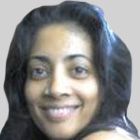
I have come to speak to you about something you are certain you know about yourself and that you are almost certain you know about everybody else.
I have come to speak to you about your sex.
My name is Gina Wilson and I am intersex.
Intersex people are people with physical differences of sex anatomy. Differences where the person might be seen as having physical features of male and female at the same time, or as having features that are not quite male or not quite female, or having features where the person is neither male or female.
Intersex have genetic, hormonal or congenital differences so that our primary sex anatomy, such as external genitalia and internal reproductive parts, do not fit with conventional ideas of what makes a male or a female. Intersex can also include differences in our secondary sex anatomy. Secondary sex anatomy is things like breasts, hair distribution, bone structure or muscle mass.
Intersex people are not hermaphrodites.
Intersex is not about gender roles, that is, man or woman. Intersex is about your body, the parts that make you more or less male or female.
Intersex is not the same as transgender or transsexual. Intersex is not about transitioning. Intersex is about different anatomies.
There are four ways we come to know we are intersex.
The first is at birth where our bodies are so visibly different our intersex is easily known. Intersex people are often surgically altered at this time to try to make us un-intersex.
The second is during puberty when that happens in unexpected ways or sometimes does not happen at all.
The third way is when we have difficulties reproducing and the reason for those difficulties is our intersex. Intersex does not necessarily mean we are infertile but sometimes does.
The fourth way is by chance.
Sometimes paternity and maternity testing can reveal to someone that they are intersex.
And sometimes people who think they are transsexual can find out they are intersex during the testing procedures transsexuals have to go through.
You probably all assume you are not intersex.
Studies have shown at least 1.7% of the population is intersex. Those figures only indicate individuals who have come to the attention of medicine.
There are no absolutes for male or female – we all exist somewhere between those poles.
Intersex is simply differences around and between the possibility of maleness and femaleness.
Though I was born intersex, that word was not used to describe my differences until quite late in my life. In fact my intersex was a dark secret to me and most of those around me. I, like nearly all intersex people, had a sense of something about myself not being quite right, not really acceptable, something unspeakable.
My intersex has never caused me a moment of grief, illness, unhappiness or regret. Social attitudes to my intersex, on the other hand, have been and continue to be a cause of great sadness for me.
In my everyday life people assume they know why I am different. I am often thought to be transsexual, gay, queer, weird and I am frequently referred to using inappropriate pronouns. There is no shame in being trans, gay or queer. It is simply an outrageous assumption and an assumption that is underpinned by deeply held prejudices.
You might find yourself wondering about my body and what was done to me as a child and as an adult to “fix me up.”
I don’t talk about that to anyone but my partner and my specialist.
I’ll tell you why.
I find it really embarrassing – it is at the top end of unpleasant to speak to an audience about my genitals.
The way I was treated as a child is difficult to work out because records on intersex surgery weren’t kept in those days.
Personal stories, though riveting, have made little difference to intersex lives and intersex rights in the one hundred and fifty years since the first one was told.
We intersex have suffered the indignity of being sideshow freaks and the subject of voyeuristic speculation for hundreds of years. I’m not here to be that kind of exhibit.
I am here to tell you about intersex and that I am proud to be intersex.
Gina is the chairperson of OII Australia an affiliate of Organisation Internationale des Intersexués






